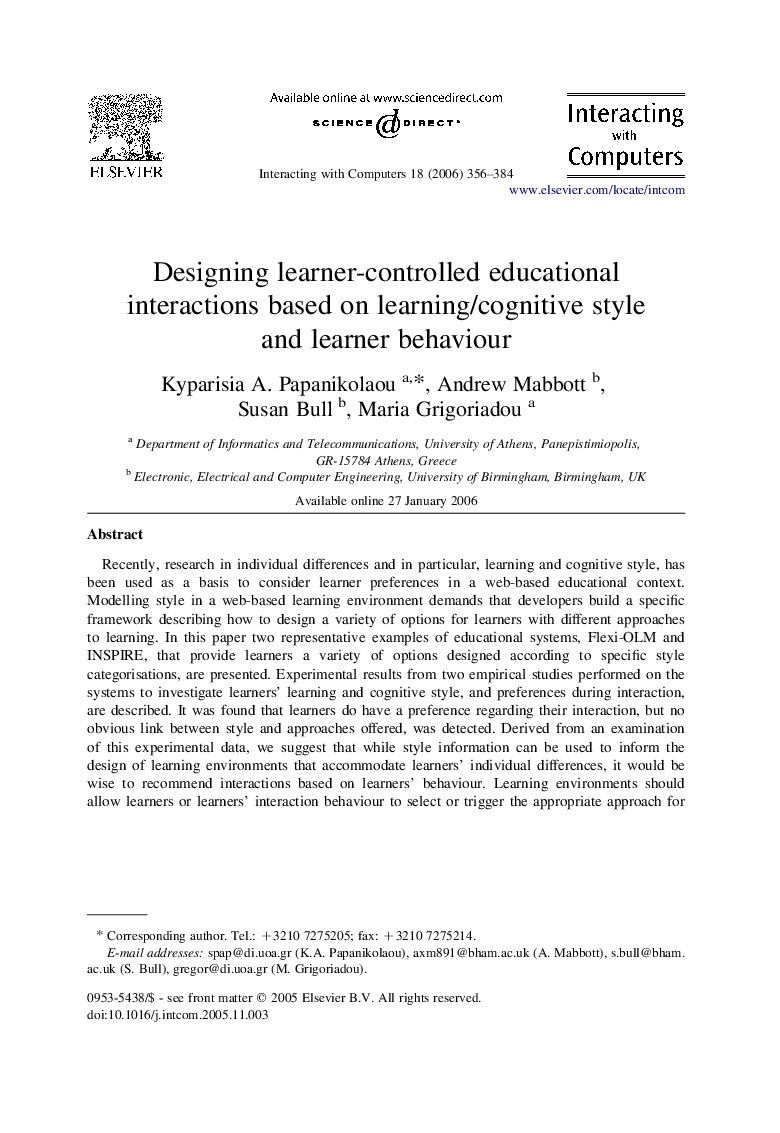| Article ID | Journal | Published Year | Pages | File Type |
|---|---|---|---|---|
| 551134 | Interacting with Computers | 2006 | 29 Pages |
Recently, research in individual differences and in particular, learning and cognitive style, has been used as a basis to consider learner preferences in a web-based educational context. Modelling style in a web-based learning environment demands that developers build a specific framework describing how to design a variety of options for learners with different approaches to learning. In this paper two representative examples of educational systems, Flexi-OLM and INSPIRE, that provide learners a variety of options designed according to specific style categorisations, are presented. Experimental results from two empirical studies performed on the systems to investigate learners' learning and cognitive style, and preferences during interaction, are described. It was found that learners do have a preference regarding their interaction, but no obvious link between style and approaches offered, was detected. Derived from an examination of this experimental data, we suggest that while style information can be used to inform the design of learning environments that accommodate learners' individual differences, it would be wise to recommend interactions based on learners' behaviour. Learning environments should allow learners or learners' interaction behaviour to select or trigger the appropriate approach for the particular learner in the specific context. Alternative approaches towards these directions are also discussed.
